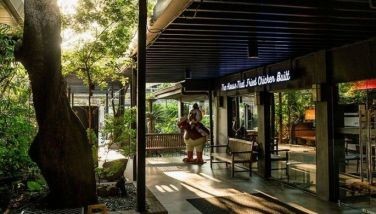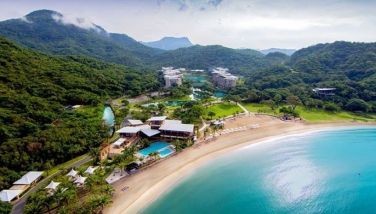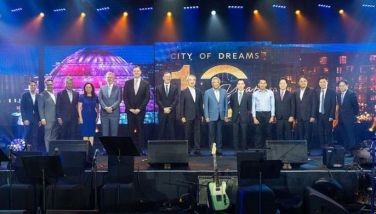Left behind

September 18, 2006 | 12:00am
There’s no place like home, but returning to the Philippines after a visit to developed countries can be depressing.
It is even more depressing after passing through Thailand, because then our slide to the bottom of the Asian heap becomes glaring.
Before 1996 our currency was trading at one to two pesos per Thai baht. Bangkok was notorious for traffic jams; it could take up to two hours to reach the city center from Don Muang international airport even at midnight.
The 1996 financial crisis started in Thailand; the country was among the hardest hit and had to borrow heavily to recover.
Returning to Manila from Iceland last week I had a stopover in Bangkok, where the sight that greeted me as the plane touched down at Don Muang was the skyway that has reduced traffic from the airport to the city center.
Thailand has repaid all its foreign debt, with a large surplus to spare, while our debt has ballooned to trillions.
Checking currency exchange rates at Don Muang, my heart sank as I saw the peso trading at 51 centavos to the baht. The Thai currency is valued at 36 to the greenback.
The strong currency should be bad news for Thai exporters, but the Thais have managed to maintain competitive prices for their products in the world market.
The Thais are sprinting ahead of us, and they don’t even enjoy our advantage in English proficiency.
Where have we gone wrong?
My Thai Airways flight from Copenhagen, Denmark (my connecting flight from Reykjavik via Iceland Air) was full. I could tell that the final destination for most of the passengers was Thailand because there was a big demand for Thai disembarkation cards from the mostly European passengers. A number of them were already partly dressed for the beach or a stroll in tropical weather.
In contrast, the noontime flight from Bangkok to Manila was half-empty, and some of the passengers were simply in transit to Osaka.
Don Muang was crowded even early in the morning. In comparison, the NAIA in mid-afternoon seemed to be on vacation.
Thailand is positioning itself as a new regional aviation hub rivaling Singapore and Malaysia. I doubt if anyone in this region can beat Singapore’s world-class Changi airport in efficiency, cleanliness and comfort, but the Thais could succeed in taking away some of the heavy air traffic from Singapore.
Last Friday Thailand’s brand-new Suvarnabhumi airport had its soft opening, with Thai Airways and Australian budget airline Jetstar Asia using the airport for some commercial flights for the first time.
Suvarnabhumi, meaning "golden land," is scheduled for full operation on Sept. 28 — a date that travel industry experts warn could be too soon. But the soft opening had only minor kinks so perhaps the concerns will prove to be unfounded.
It took 40 years and a host of corruption scandals before the Thais finally got Suvarnabhumi operational. That sounds depressingly familiar, but at least the Thais have finally opened an airport — a modern one with a tarmac huge enough to accommodate five of those Airbus 380 double-deck super jumbo jets, and terminals that can decongest Don Muang. Suvarnabhumi also boasts of having the world’s largest air control tower.
Let’s hope it won’t take us 40 years to open one additional terminal at the Ninoy Aquino International Airport. By the time we manage to open Terminal 3, pythons, nourished by rats, could have taken up residence in the rotten ceilings.
What have the Thais done right? It is not enough to say that they have a unifying factor in their popular King Bhumibol Adulyadej, who steps in during political crises to restore stability.
The success formula has to be in the people themselves. Thailand, which has never been colonized by Western powers, has preserved its unique culture and a strong sense of national identity. In times of crises, such as the Asian financial flu in 1996, that sense of nationhood comes to the fore. Thais united, bit the bitter pills and made personal sacrifices to speed up their economic recovery.
Sure, Thai politicians are just like counterparts in many other countries: selfish, pandering to populist sentiments, often corrupt. But the Thais often know when to transcend personal considerations and do what’s best for their country, aware that what’s good for the nation will generally benefit the individual.
They have also become aware that for national survival in the new millennium, they have to be ready for competition in a global marketplace. Unable to compete head-to-head with dirt-cheap goods from China, they are marketing products that are in fact common in Southeast Asia, but prepared and packaged in ways that are uniquely Thai.
Just consider products on the shelves of the shops at Don Muang. There’s the Thai shrimp paste, similar to our bagoong but dry, packed in air-tight plastic containers that can be transported safely on planes without the risk of bursting like our bagoong in glass bottles.
A travel agent told me that shortly after 9/11, her Filipino tourist group of about 80 was held for about 11 hours in a European airport on suspicion that the group was transporting biological weapons such as anthrax. The reason: two European baggage handlers had thrown up at the smell of bagoong whose glass container had burst in the luggage of one of the Filipinos. Each member of the group was grilled by security officers wearing disease-control uniforms similar to spacesuits.
Then there’s dilis or anchovy. The Thais have packed the tiny fish in export-quality airtight containers with different seasonings, spices and herbal combinations that are uniquely Thai. They’ve done the same for cuttlefish, squid, tamarind and peanuts. They make Thai-flavored rice crispies topped with meat floss and packaged like Pringle’s potato chips.
The Thais make coconut cream seem as delectable as dairy-based cream. They have become a major exporter of various types of rice and have started marketing gourmet brown rice (at gourmet prices). Northern Thailand is a major source of cutflowers for export; the entire country is one of the biggest sources of orchids.
The Thais are even presenting their muddy silted rivers as "milk chocolate-colored" waters ideal for tourist boat rides. They are making foreign visitors eat insects as snacks.
Even the beaches of Phuket have recovered from last year’s tsunami.
Surveys show Thailand steadily climbing up the ladder of global competitiveness, attracting foreign investments and leaving us far behind.
And only 10 years ago we were ahead. We have a lot of catching up to do.
CORRECTION: Kulusuk is in east, not west Greenland. My apologies.
It is even more depressing after passing through Thailand, because then our slide to the bottom of the Asian heap becomes glaring.
Before 1996 our currency was trading at one to two pesos per Thai baht. Bangkok was notorious for traffic jams; it could take up to two hours to reach the city center from Don Muang international airport even at midnight.
The 1996 financial crisis started in Thailand; the country was among the hardest hit and had to borrow heavily to recover.

Returning to Manila from Iceland last week I had a stopover in Bangkok, where the sight that greeted me as the plane touched down at Don Muang was the skyway that has reduced traffic from the airport to the city center.
Thailand has repaid all its foreign debt, with a large surplus to spare, while our debt has ballooned to trillions.
Checking currency exchange rates at Don Muang, my heart sank as I saw the peso trading at 51 centavos to the baht. The Thai currency is valued at 36 to the greenback.
The strong currency should be bad news for Thai exporters, but the Thais have managed to maintain competitive prices for their products in the world market.
The Thais are sprinting ahead of us, and they don’t even enjoy our advantage in English proficiency.
Where have we gone wrong?
In contrast, the noontime flight from Bangkok to Manila was half-empty, and some of the passengers were simply in transit to Osaka.
Don Muang was crowded even early in the morning. In comparison, the NAIA in mid-afternoon seemed to be on vacation.
Thailand is positioning itself as a new regional aviation hub rivaling Singapore and Malaysia. I doubt if anyone in this region can beat Singapore’s world-class Changi airport in efficiency, cleanliness and comfort, but the Thais could succeed in taking away some of the heavy air traffic from Singapore.
Last Friday Thailand’s brand-new Suvarnabhumi airport had its soft opening, with Thai Airways and Australian budget airline Jetstar Asia using the airport for some commercial flights for the first time.
Suvarnabhumi, meaning "golden land," is scheduled for full operation on Sept. 28 — a date that travel industry experts warn could be too soon. But the soft opening had only minor kinks so perhaps the concerns will prove to be unfounded.
It took 40 years and a host of corruption scandals before the Thais finally got Suvarnabhumi operational. That sounds depressingly familiar, but at least the Thais have finally opened an airport — a modern one with a tarmac huge enough to accommodate five of those Airbus 380 double-deck super jumbo jets, and terminals that can decongest Don Muang. Suvarnabhumi also boasts of having the world’s largest air control tower.
Let’s hope it won’t take us 40 years to open one additional terminal at the Ninoy Aquino International Airport. By the time we manage to open Terminal 3, pythons, nourished by rats, could have taken up residence in the rotten ceilings.
The success formula has to be in the people themselves. Thailand, which has never been colonized by Western powers, has preserved its unique culture and a strong sense of national identity. In times of crises, such as the Asian financial flu in 1996, that sense of nationhood comes to the fore. Thais united, bit the bitter pills and made personal sacrifices to speed up their economic recovery.
Sure, Thai politicians are just like counterparts in many other countries: selfish, pandering to populist sentiments, often corrupt. But the Thais often know when to transcend personal considerations and do what’s best for their country, aware that what’s good for the nation will generally benefit the individual.
They have also become aware that for national survival in the new millennium, they have to be ready for competition in a global marketplace. Unable to compete head-to-head with dirt-cheap goods from China, they are marketing products that are in fact common in Southeast Asia, but prepared and packaged in ways that are uniquely Thai.
A travel agent told me that shortly after 9/11, her Filipino tourist group of about 80 was held for about 11 hours in a European airport on suspicion that the group was transporting biological weapons such as anthrax. The reason: two European baggage handlers had thrown up at the smell of bagoong whose glass container had burst in the luggage of one of the Filipinos. Each member of the group was grilled by security officers wearing disease-control uniforms similar to spacesuits.
Then there’s dilis or anchovy. The Thais have packed the tiny fish in export-quality airtight containers with different seasonings, spices and herbal combinations that are uniquely Thai. They’ve done the same for cuttlefish, squid, tamarind and peanuts. They make Thai-flavored rice crispies topped with meat floss and packaged like Pringle’s potato chips.
The Thais make coconut cream seem as delectable as dairy-based cream. They have become a major exporter of various types of rice and have started marketing gourmet brown rice (at gourmet prices). Northern Thailand is a major source of cutflowers for export; the entire country is one of the biggest sources of orchids.
The Thais are even presenting their muddy silted rivers as "milk chocolate-colored" waters ideal for tourist boat rides. They are making foreign visitors eat insects as snacks.
Even the beaches of Phuket have recovered from last year’s tsunami.
Surveys show Thailand steadily climbing up the ladder of global competitiveness, attracting foreign investments and leaving us far behind.
And only 10 years ago we were ahead. We have a lot of catching up to do.
BrandSpace Articles
<
>
- Latest
- Trending
Trending
Latest
Trending
Recommended

April 1, 2025 - 12:00am
























